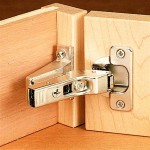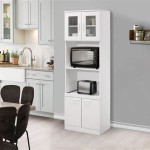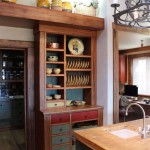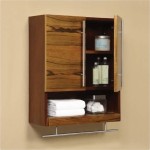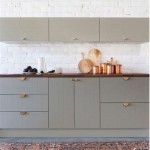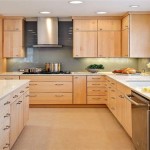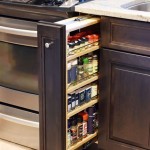Maximize Space With Drawers In Cabinets: A Comprehensive Guide
Efficient space utilization is a critical aspect of modern home design, particularly in areas like the kitchen, bathroom, and storage rooms. Cabinets, as essential storage units, can significantly impact the overall organization and functionality of a space. While shelves are a traditional cabinet component, incorporating drawers within cabinets offers a substantial advantage in maximizing storage capacity and improving accessibility. This article explores the benefits of using drawers in cabinets, different types of drawers available, planning considerations, and practical applications to help readers optimize their storage solutions.
The fundamental principle behind maximizing space is not just about increasing the volume of storage but also about ensuring that the available space is used effectively. Traditional cabinets with shelves often suffer from underutilization, particularly in the back and lower sections. Items placed at the back can be difficult to reach, leading to forgotten or wasted supplies. Furthermore, stacking items on shelves can create instability and difficulty in accessing the required item without disturbing the entire stack. Drawers, on the other hand, address these issues by providing a pull-out storage solution that allows for easy access to all items, regardless of their location within the cabinet.
Enhanced Accessibility and Visibility
One of the primary advantages of using drawers in cabinets is the improved accessibility and visibility they offer. Unlike fixed shelves where items at the back are often obscured and hard to reach, drawers allow users to pull the entire contents forward. This eliminates the need to rummage through the cabinet, making it easier to locate specific items. This accessibility is particularly beneficial for individuals with mobility limitations or those who find it challenging to bend or reach into deep cabinets. The enhanced visibility also helps in inventory management, as users can easily see what is available, reducing the likelihood of purchasing duplicates. By providing a clear view of the contents, drawers promote better organization and prevent items from being forgotten or lost at the back of the cabinet.
Beyond simple accessibility, the ergonomic benefits of drawers are noteworthy. Retrieving heavy pots or appliances from a low cabinet shelf can strain the back and knees. Drawers bring these items forward, reducing the physical demand of accessing them. Full-extension drawer slides further enhance this benefit by allowing the drawer to be pulled out completely, exposing the entire contents. This is especially useful for storing larger items that might otherwise be difficult to maneuver in a limited space. The improved ergonomics contribute not only to convenience but also to the long-term well-being of the user by minimizing the risk of strain and injury.
The design of drawers also plays a crucial role in visibility. Drawer organizers and dividers can be used to further categorize and separate items, preventing them from becoming jumbled and disorganized. Clear drawer fronts or labels can also be added to quickly identify the contents without having to open the drawer. These features contribute to a more efficient and user-friendly storage system.
Optimized Storage Capacity
Drawers can significantly increase the usable storage capacity of a cabinet compared to traditional shelving. While shelves often have wasted vertical space due to varying item heights, drawers can be customized to fit the specific needs of the items being stored. Deep drawers are ideal for storing pots and pans, while shallow drawers are perfect for utensils, cutlery, and small accessories. This tailored approach maximizes the use of the available space and prevents items from being stacked haphazardly, which can lead to damage or difficulty in retrieving them. Furthermore, the sides of the drawers provide containment, preventing items from falling or shifting, which is a common issue with open shelving.
The efficiency of drawer storage is amplified when combined with internal organizers. These organizers can be customized to fit specific items, such as spice jars, knives, or even plates and bowls. Drawer dividers can create compartments for different types of items, preventing them from mixing and maximizing space. For example, a drawer dedicated to pots and pans can be fitted with vertical dividers to keep them neatly stacked and prevent them from scratching each other. Similarly, a cutlery drawer can be organized with individual compartments for forks, knives, and spoons, making it easier to find what is needed. This level of customization ensures that every inch of space within the drawer is used effectively, increasing the overall storage capacity of the cabinet.
In addition to optimizing vertical space, drawers can also address the issue of "dead space" or unused areas within a cabinet. For instance, the space under a sink cabinet is often challenging to utilize effectively with traditional shelving. However, installing a U-shaped drawer around the plumbing can create valuable storage for cleaning supplies or other items that would otherwise be cluttering the countertop. Corner cabinets, which are notoriously difficult to access, can also be equipped with pull-out drawers or revolving shelves to maximize their usability. These innovative solutions transform previously unusable space into functional storage areas, further enhancing the overall efficiency of the cabinet.
Improved Organization and Aesthetics
Beyond their practical benefits, drawers contribute significantly to the overall organization and aesthetics of a space. By providing a designated place for everything, drawers help to maintain a clutter-free environment. The ability to conceal items behind closed drawer fronts creates a cleaner and more streamlined look, which is particularly desirable in modern minimalist designs. This is in contrast to open shelving, where items are constantly on display, potentially creating a cluttered or disorganized appearance. Drawers offer a more controlled and visually appealing storage solution.
The organizational advantages of drawers extend beyond simply concealing items. By categorizing and separating items within drawers using organizers and dividers, users can create a system that is easy to maintain and navigate. This is especially important in high-traffic areas like the kitchen, where quick access to utensils, cookware, and food items is essential. A well-organized drawer system reduces the time spent searching for items and minimizes the frustration associated with disorganized storage. This improved efficiency can contribute to a more enjoyable and productive experience in the kitchen or any other space where cabinets are used.
The aesthetic appeal of drawers can be further enhanced by selecting drawer fronts that complement the overall design of the room. Drawer fronts are available in a wide range of materials, finishes, and styles, allowing users to customize the look of their cabinets to match their personal preferences. From sleek and modern handle-less drawers to traditional raised-panel drawers, the options are virtually limitless. The hardware used for the drawers, such as pulls and knobs, can also be chosen to further enhance the aesthetic appeal. By carefully selecting the drawer fronts and hardware, users can create a cohesive and visually appealing storage system that complements the overall design of the room.
Furthermore, the internal organization of drawers can also contribute to the overall aesthetic. Using matching containers, organizers, and labels can create a sense of order and visual harmony within the drawers. This attention to detail can elevate the look of the entire cabinet and contribute to a more polished and sophisticated appearance. Even when the drawers are closed, the knowledge that the contents are neatly organized can provide a sense of satisfaction and control, contributing to a more positive and relaxing environment.
When considering the use of drawers in cabinets, it is important to assess the specific needs of the space and the items being stored. Different types of drawers are available, each with its own unique advantages and disadvantages. Deep drawers are ideal for storing large or bulky items, while shallow drawers are better suited for smaller items. Adjustable drawers allow for flexibility in storage capacity, while pull-out drawers can be used to maximize access in hard-to-reach areas. By carefully considering the options and selecting the right type of drawer for each application, users can create a custom storage solution that is both functional and aesthetically pleasing.
Planning is essential for successfully incorporating drawers into cabinets. Before making any changes, it is important to measure the dimensions of the cabinets and the items that will be stored. This will help to determine the optimal size and configuration of the drawers. It is also important to consider the weight capacity of the drawer slides and to choose slides that are appropriate for the intended use. Finally, it is important to factor in the cost of the drawers and hardware, as well as the time and effort required for installation.
Ultimately, optimizing space with drawers in cabinets is a practical investment that can enhance the functionality, organization, and aesthetics of any living space. By carefully considering the benefits, types of drawers available, planning considerations, and practical applications, individuals can create a storage solution that effectively maximizes space and improves their overall quality of life.

Your Cramped Kitchen Local Designer Shares Creative Ways To Add More Storage Space Palo Alto

How To Maximize Storage With Innovative Kitchen Cabinet Designs North East Ohio The Floor King

15 Shallow Drawer Ideas Help To Maximize Your Storage Space

Kitchen Cabinet Ideas To Maximize Storage Space Rta Wood Cabinets

Maximize Your Kitchen Storage In Denver With Custom Cabinets Creations

5 Cool Kitchen Storage Ideas Solutions Maximize Space

How To Plan Your Kitchen Storage For Maximum Efficiency

20 Kitchen Storage Ideas Extra Space

How To Make The Most Of A Small Kitchen Wolf Home S

How We Organized Our Kitchen Drawers And Cabinets Jenna Sue Design
Related Posts

